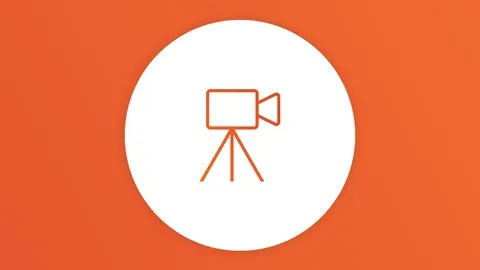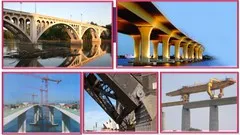
Free Civil Engineering Tutorial - Surveying and Mapping in Civil Engineering 
This course provides an introduction to surveying and mapping in civil engineering. It covers the application of surveying, the equipment used, data processing, topography mapping, and the calculation of land volume. Students will gain a comprehensive understanding of the surveying and mapping process and its importance in civil engineering. ▼
ADVERTISEMENT
Course Feature
![]() Cost:
Cost:
Free
![]() Provider:
Provider:
Udemy
![]() Certificate:
Certificate:
No Information
![]() Language:
Language:
English
![]() Start Date:
Start Date:
Self Paced
Course Overview
❗The content presented here is sourced directly from Udemy platform. For comprehensive course details, including enrollment information, simply click on the 'Go to class' link on our website.
Updated in [May 25th, 2023]
This course provides an overview of surveying and mapping in civil engineering. Students will learn about the application of surveying and the equipment used in construction projects. They will also gain an understanding of how to process data collected in the field, create a topography map, and calculate the volume of land required. By the end of the course, students will have a comprehensive understanding of surveying and mapping in civil engineering.
[Applications]
The student who has completed this course will be able to apply their knowledge of surveying and mapping in civil engineering to a variety of projects. They will be able to use the equipment and techniques learned to accurately measure and map land, as well as process the data collected. Additionally, they will be able to create topography maps and calculate the volume of land required for a project. With this knowledge, the student will be able to contribute to the success of any civil engineering project.
[Career Paths]
1. Civil Engineer: Civil engineers are responsible for designing, constructing, and maintaining infrastructure projects such as roads, bridges, dams, and buildings. They use surveying and mapping techniques to plan and design these projects. With the increasing demand for infrastructure projects, the demand for civil engineers is expected to grow significantly in the coming years.
2. Land Surveyor: Land surveyors use surveying and mapping techniques to measure and map land boundaries, topography, and other features. They are also responsible for preparing legal documents such as deeds, maps, and other documents related to land ownership. With the increasing demand for land development, the demand for land surveyors is expected to grow in the coming years.
3. Construction Manager: Construction managers are responsible for overseeing the construction of infrastructure projects. They use surveying and mapping techniques to plan and design projects, as well as to monitor progress and ensure that projects are completed on time and within budget. With the increasing demand for infrastructure projects, the demand for construction managers is expected to grow in the coming years.
4. GIS Analyst: GIS analysts use geographic information systems (GIS) to analyze and interpret data related to land use, topography, and other features. They use surveying and mapping techniques to create maps and analyze data. With the increasing demand for data analysis and mapping, the demand for GIS analysts is expected to grow in the coming years.
[Education Paths]
1. Bachelor of Science in Civil Engineering: This degree program provides students with a comprehensive understanding of civil engineering principles and practices. Students learn about the design and construction of roads, bridges, buildings, and other infrastructure. They also learn about the environmental impact of civil engineering projects and how to manage them. Additionally, students gain knowledge in surveying and mapping, which is essential for civil engineering projects.
2. Master of Science in Geomatics: This degree program focuses on the application of geospatial technologies to solve problems in the fields of surveying, mapping, and engineering. Students learn about the principles of geomatics, including the use of GPS, GIS, and remote sensing. They also gain knowledge in data analysis, cartography, and land surveying. This degree program is ideal for those interested in pursuing a career in civil engineering.
3. Master of Science in Civil Engineering: This degree program provides students with a comprehensive understanding of civil engineering principles and practices. Students learn about the design and construction of roads, bridges, buildings, and other infrastructure. They also learn about the environmental impact of civil engineering projects and how to manage them. Additionally, students gain knowledge in surveying and mapping, which is essential for civil engineering projects.
4. Doctor of Philosophy in Civil Engineering: This degree program provides students with advanced knowledge in civil engineering principles and practices. Students learn about the design and construction of roads, bridges, buildings, and other infrastructure. They also learn about the environmental impact of civil engineering projects and how to manage them. Additionally, students gain knowledge in surveying and mapping, which is essential for civil engineering projects. This degree program is ideal for those interested in pursuing a career in research or academia.
Course Syllabus
Introduction to Surveying
Land Surveying Equipment (I)
Land Surveying (II)
Measurement of Distance and Angle
Measurement of Coordinate
Height Measurement
Area Measurement (I)
Area Measurement (II)
Volume Measurement
Contour Line
Pros & Cons

Wonderful Course

Great beginner's course

Good teaching

Very Interesting.

Boring

Monotone speaker

Needs more slides.
Course Provider

Provider Udemy's Stats at AZClass
Discussion and Reviews
0.0 (Based on 0 reviews)
Explore Similar Online Courses

Master Public Policy Analysis: Advanced

Tally Erp 9 + Tally Prime + GST 2022 - Certificate Course

Python for Informatics: Exploring Information

Social Network Analysis

Introduction to Systematic Review and Meta-Analysis

The Analytics Edge

DCO042 - Python For Informatics

Causal Diagrams: Draw Your Assumptions Before Your Conclusions

Whole genome sequencing of bacterial genomes - tools and applications

Basics of Civil Engineering Mechanics - Beginner Course

Roof Runoff Structure Design (NRCS Standard 558)


Start your review of Free Civil Engineering Tutorial - Surveying and Mapping in Civil Engineering